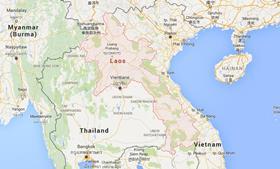
Northern Laos is emerging as an important source of fresh bananas for the Chinese market, with several different investors from China itself understood to be establishing plantations covering thousands of hectares across several different regions. The investors have been drawn to the region by good availability of suitable and affordable land with advantageous conditions for banana plantations, factors which are often not as easy to find in China itself.
According to various reports, the Chinese government has been actively encouraging entrepreneurs to emigrate to Laos, providing them with financial incentives to acquire land, which many locals are happy to offer on long-term leases for apparently better returns than they themselves achieved previously by producing crops such as rice or maize.
An article published recently in the Vientiane Times noted that plantations in the provinces of Oudomxay, Luang Namtha and Bokeo are already supplying hundred of thousands of tonnes of bananas for export to China. Two Chinese companies, as well as one local operator, are also said to be preparing to invest in production in Xayaboury, having been given the go-ahead by local authorities.
Since the first Chinese prospectors came to Laos seeking their fortune in the banana business more than decade ago, production and exports have risen dramatically. This year, a total of 100,000 tonnes of bananas are expected to be harvested in the northern part of the country and shipped to China, slightly up on last year’s 99,000 tonnes.
That figure could rise significantly in the coming years. In Oudomxay alone, for example, where investors have reportedly invested more than US$8m in banana farms, only around one-third of more than 2,800ha currently leased to the Chinese has been used.
Growing concerns
But there are also fears that the rush to develop large-scale banana production in northern Laos could have a detrimental impact on the area. Cecilie Friis, a researcher working for the Integrative Research Institute for Transformation of Human‐Environment Systems at the Humboldt University in Berlin, spent much of 2014 investigating the impact of banana plantations set up by Chinese investors since 2008 in Long District, part of Luang Namtha Province in north-western Laos.
When she asked villagers in Ban Sirimoon, Long District,about the impact of the plantations, they expressed concern about land degradation, Friis reported. “In particular, the use of chemical fertilisers, herbicides and pesticides in theplantations were mentioned as causes for concern,' she explained. 'Several farmers expressedconcern that the heavy chemical usage would impact the general land quality of their land.”
Other land-owners said they were uncertain about the land-clearing process needed to create the plantations. “This entailed a destruction of traditional land markers used by villagers to recognise boundaries between plots, as well as the traditional paddy rice irrigation system of small channels and sluices,” Friis observed. “While some farmers had managed to mark their fields with concrete land markers, the majority of the farmers had not.”
There was therefore some concern among the villagers about what state their land would be in should they decide not to continue leasing it to the Chinese in future. One farmer reportedly told Friis: “Now that I have granted the land to the banana, I can earn money, but I am not sure if I want to grant more land in the future. We worry about the land quality – worry that the Chinese will not clean up the land after the contract, and especially the roots of the banana.”



